6
MARIANI’S
Virtual
Gourmet
December 1,
2019
NEWSLETTER
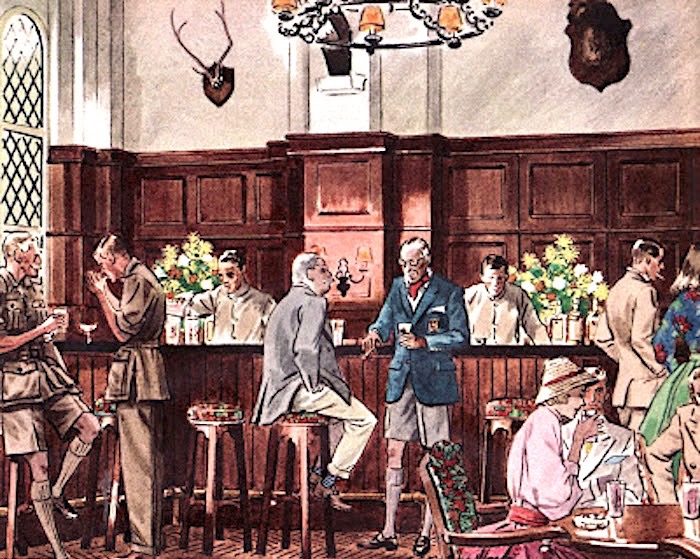
❖❖❖
IN THIS ISSUE
WHAT'S NEW IN SCOTTSDALE, AZ?
By John Mariani
NEW YORK CORNER
CHOLA
By John Mariani
NOTES FROM THE WINE CELLAR
VERY GOOD WINES FOR
VERY LOW PRICES
By John Mariani
❖❖❖
WHAT'S HAPPENING IN
SCOTTSDALE, AZ?
By John Mariani
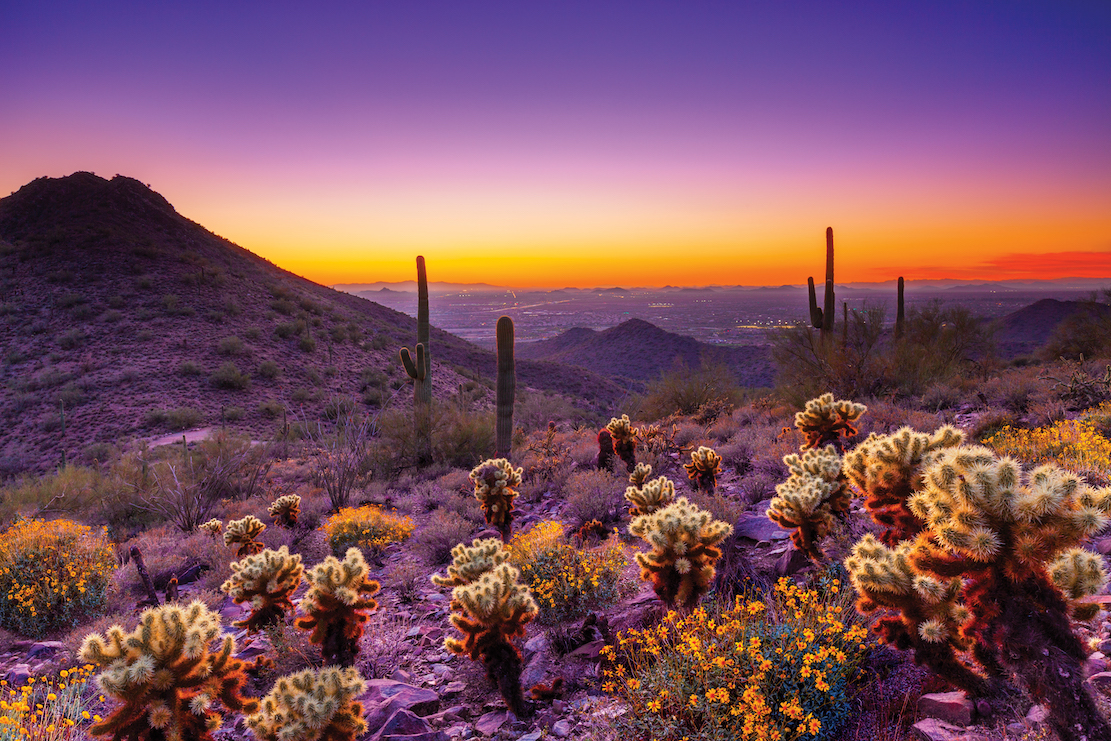
McDowell Sonoran Preserve
I’m
not sure I’ve ever been at the geographical
center of Scottsdale, or at least I’ve never
found it.  There is
a very pleasant Old Town and a Fashion Square,
but aside from those there’s not much of a
downtown.
Which is of little consequence because
the appeal of Scottsdale, as opposed to Phoenix,
its sprawling, smoggy neighbor, is all that
makes up its desert landscape, which includes an
omnipresent view of Camelback Mountain.
There is
a very pleasant Old Town and a Fashion Square,
but aside from those there’s not much of a
downtown.
Which is of little consequence because
the appeal of Scottsdale, as opposed to Phoenix,
its sprawling, smoggy neighbor, is all that
makes up its desert landscape, which includes an
omnipresent view of Camelback Mountain.
As with so much of the desert
of Arizona,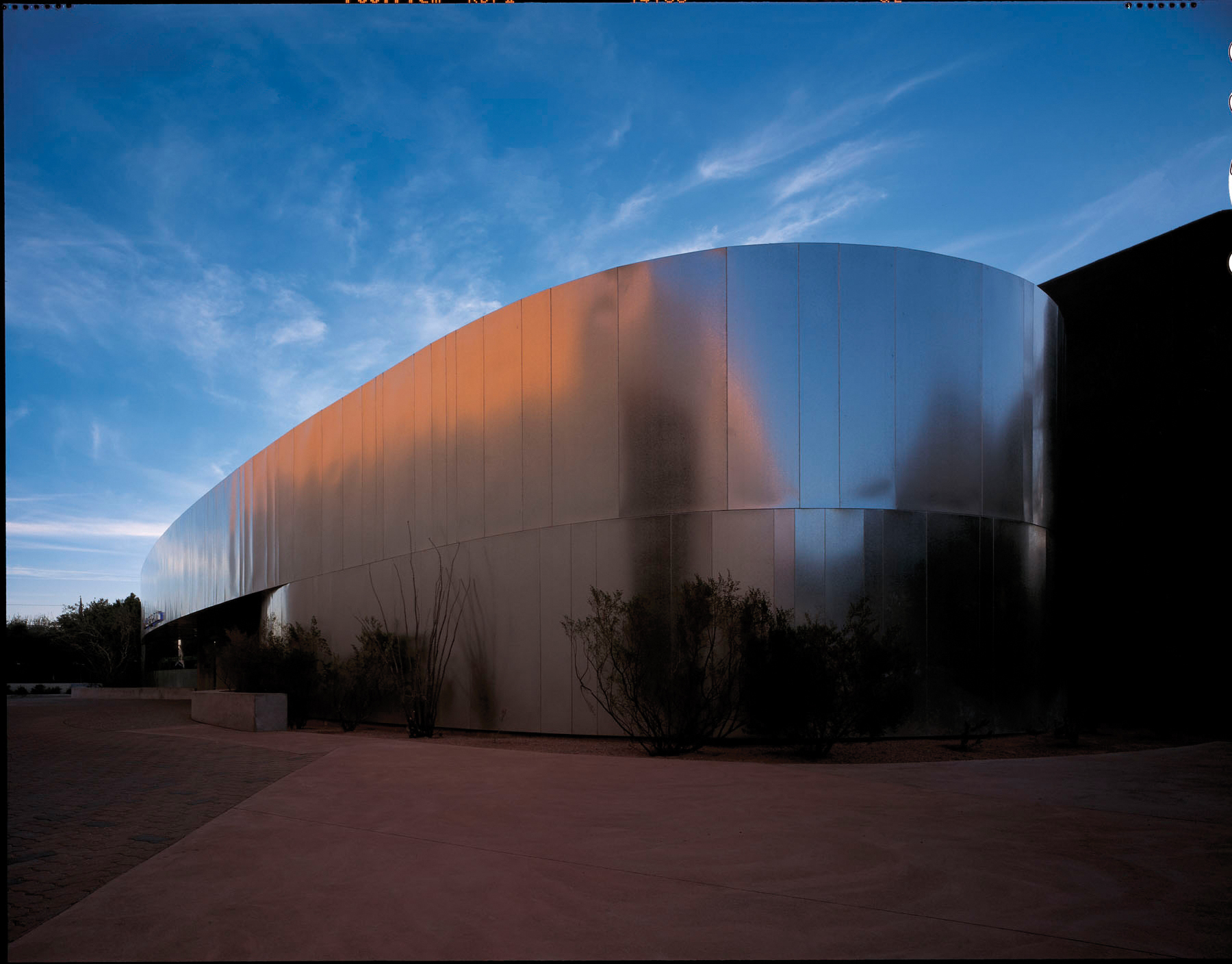 trekking
is of prime interest to many visitors, with more
than 30,000 acres and over 200 miles of trail in
the McDowell Sonoran Preserve. For reasons that
escape me, people like to attempt the
boulder-strewn climb up Camelback, but I’m told
the sunset from the top of Tom’s Thumb Trail is
worth the five-mile round-trip.
trekking
is of prime interest to many visitors, with more
than 30,000 acres and over 200 miles of trail in
the McDowell Sonoran Preserve. For reasons that
escape me, people like to attempt the
boulder-strewn climb up Camelback, but I’m told
the sunset from the top of Tom’s Thumb Trail is
worth the five-mile round-trip.
For me, Scottsdale is much more
appealing for the way its best architecture fits
into the landscape, as home to some of the finest
American designs of the last century, including
Frank Lloyd Wright’s Taliesin West (above; there
are 90-minute tours); Ralph Haver’s Villa
Monterey; Paolo Soleri’s visionary, never-finished
Arcosanti; and Will Bruder’s Scottsdale Museum of
Contemporary Art (right).
The last, awkwardly dubbed
SMoCA, was rehabbed from an old movie theater,
adjacent to the Scottsdale Center for the
Performing Arts, in a thoroughly minimalist design
of bright desert colors and a shimmering,
wraparound galvanized steel and glass exterior.
Inside ramps lead to floors set with various
exhibits of modern art with a focus on Arizona.
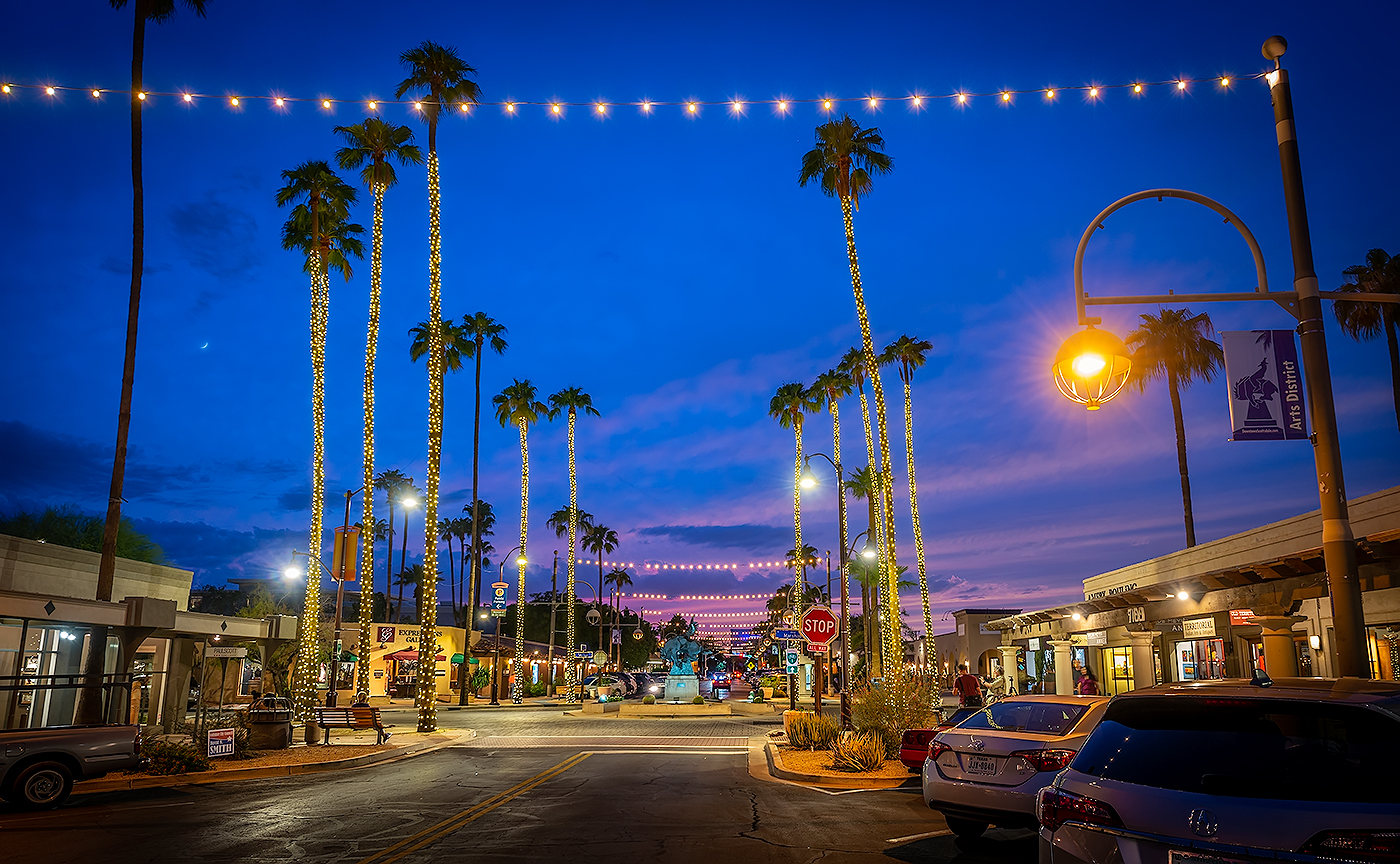 The
Arts District itself in Old Town, aside from
cafés, restaurant and boutiques, is chockablock
with art galleries, many displaying the usual
Southwest works of sad Native Americans, cowboys
on bucking broncos and landscapes galore. Every
Thursday for the past 40 years, America’s Original
Art Walk (left) takes place from 7 to 9
p.m. along Main Street, which is particularly
lovely because at night the neighborhood’s lines
of palm trees are hung with strings of lights. In
January the
Arizona Art Expo and the Celebration of Fine
Art are major draws, followed in March
by the Scottsdale Arts Festival.
The
Arts District itself in Old Town, aside from
cafés, restaurant and boutiques, is chockablock
with art galleries, many displaying the usual
Southwest works of sad Native Americans, cowboys
on bucking broncos and landscapes galore. Every
Thursday for the past 40 years, America’s Original
Art Walk (left) takes place from 7 to 9
p.m. along Main Street, which is particularly
lovely because at night the neighborhood’s lines
of palm trees are hung with strings of lights. In
January the
Arizona Art Expo and the Celebration of Fine
Art are major draws, followed in March
by the Scottsdale Arts Festival.
My own favorite arts venue in
Scottsdale is the wonderful Museum of the West in
Old Town, one of the finest of its genre
I’ve seen. It’s of an ideal size so that you can
easily cover it all in one visit, from the artwork
of some of America’s finest painters and sculptors
to its dazzling collection of Navajo chiefs’
blankets, six centuries of Hopi pottery and 1,400
examples of Old West cowboy gear. When I was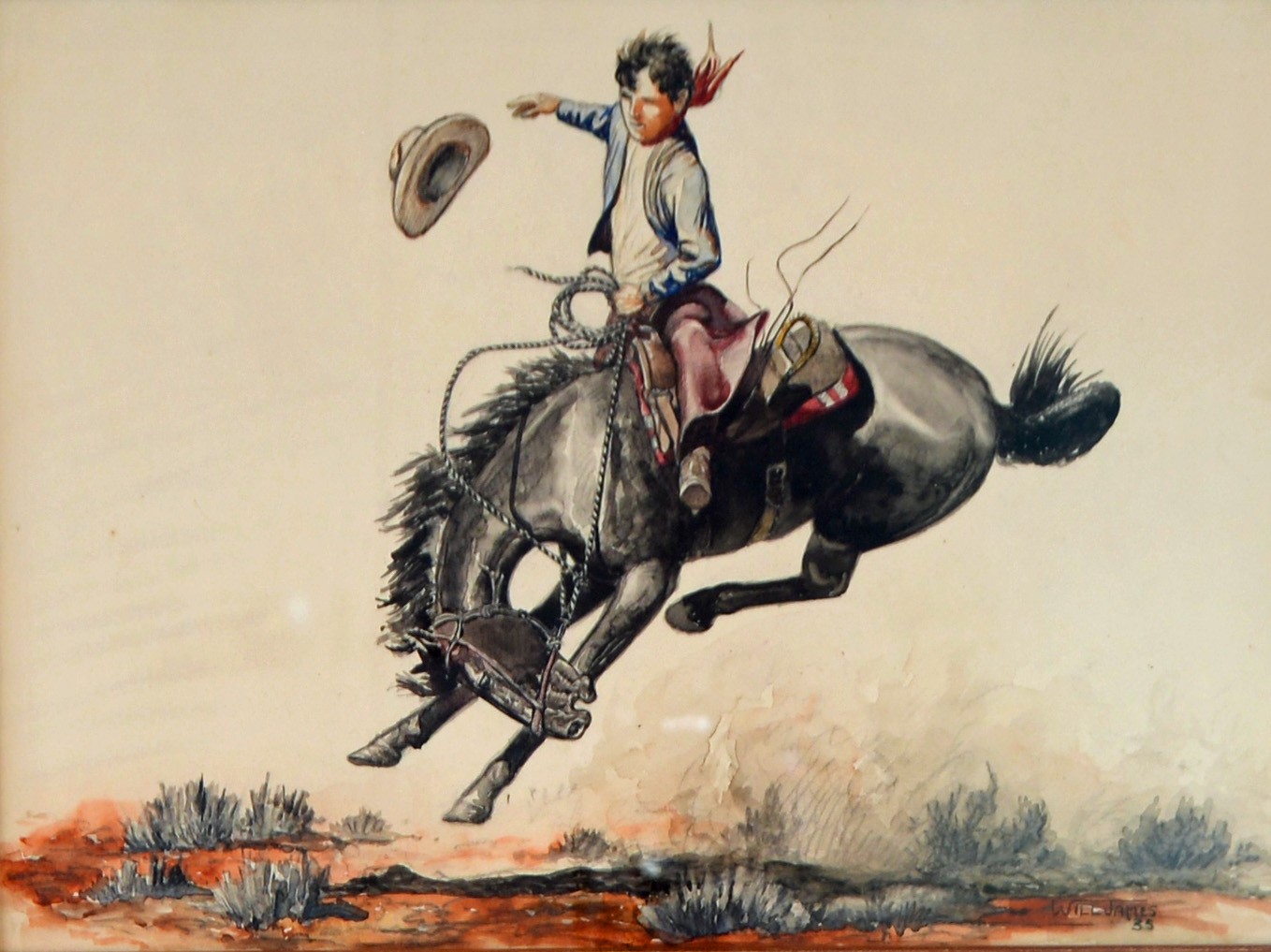 there this summer I was enchanted
by a comprehensive exhibition (now closed)
dedicated to the so-called cowboy artist and
author Will James (1892-1942), whose knowledge of
horse anatomy (right,
"Young Cowboy," 1935) was based on personal,
up-close experience and whose action-filled line
drawings are as fine as anything done by the
better-known Frederick Remington, whose work is
also there. James was a beloved childhood hero of
mine among my favorite authors. He had a
deceptively straightforward style of capturing the
life of the west with nonpareil detail in his
artwork and whose spare prose had the drawl of a
cowboy telling good yarns around a campfire about
horses named Smoky, Sand and Scorpion.
there this summer I was enchanted
by a comprehensive exhibition (now closed)
dedicated to the so-called cowboy artist and
author Will James (1892-1942), whose knowledge of
horse anatomy (right,
"Young Cowboy," 1935) was based on personal,
up-close experience and whose action-filled line
drawings are as fine as anything done by the
better-known Frederick Remington, whose work is
also there. James was a beloved childhood hero of
mine among my favorite authors. He had a
deceptively straightforward style of capturing the
life of the west with nonpareil detail in his
artwork and whose spare prose had the drawl of a
cowboy telling good yarns around a campfire about
horses named Smoky, Sand and Scorpion.
 I had no
idea that Philadelphia-born modernist Stuart Davis
spent time in the West, finding that the landscape
intimidated him in his work, “because the place is
always there in such a dominating way,” he said.
I had no
idea that Philadelphia-born modernist Stuart Davis
spent time in the West, finding that the landscape
intimidated him in his work, “because the place is
always there in such a dominating way,” he said.
Currently there is an exhibit
of the photographs of elder statesman Barry
Goldwater in the Arizona Highways Collection, and,
if hyperealistic portraits of mountain men, fur
traders and moon landings make you giddy, artist
Paul Calle’s work is spread over several rooms
upstairs.
I stayed at the Mountain Shadows
Resort (left
and below) in Paradise Valley, which
dates back to 1959, when it became a mecca for the Hollywood crowd
of its day. Many life-size photos of the celebs
and orchestra leader Dick Halleman are
arrayed on its walls. Soon a golf course and
private residences were added, then the resort
went through a declining management phase by
Marriott, which closed the property in 2004. In
bad shape, the property was bought by Westroc
Hospitality and Woodbine Development Corp. in 2014
and completely rebuilt as a thoroughly modern
resort that opened in 2017 with 183 rooms and two
75-foot swimming pools. (Winter rates are currently from
$179.)
for the Hollywood crowd
of its day. Many life-size photos of the celebs
and orchestra leader Dick Halleman are
arrayed on its walls. Soon a golf course and
private residences were added, then the resort
went through a declining management phase by
Marriott, which closed the property in 2004. In
bad shape, the property was bought by Westroc
Hospitality and Woodbine Development Corp. in 2014
and completely rebuilt as a thoroughly modern
resort that opened in 2017 with 183 rooms and two
75-foot swimming pools. (Winter rates are currently from
$179.)
The
use of Native-American motifs and rugs gives the
resort’s rooms an echo of the region’s history,
with a basic palette of gray and beige walls
contrasted with the emerald green of the golf
course and the cornflower blue of the skies. I shall be
writing soon about the resort’s fine restaurant,
Hearth ’61, in an article about eating around
Scottsdale.
❖❖❖
By John Mariani
232
East 58th Street (near Second Avenue)
212-688-4619
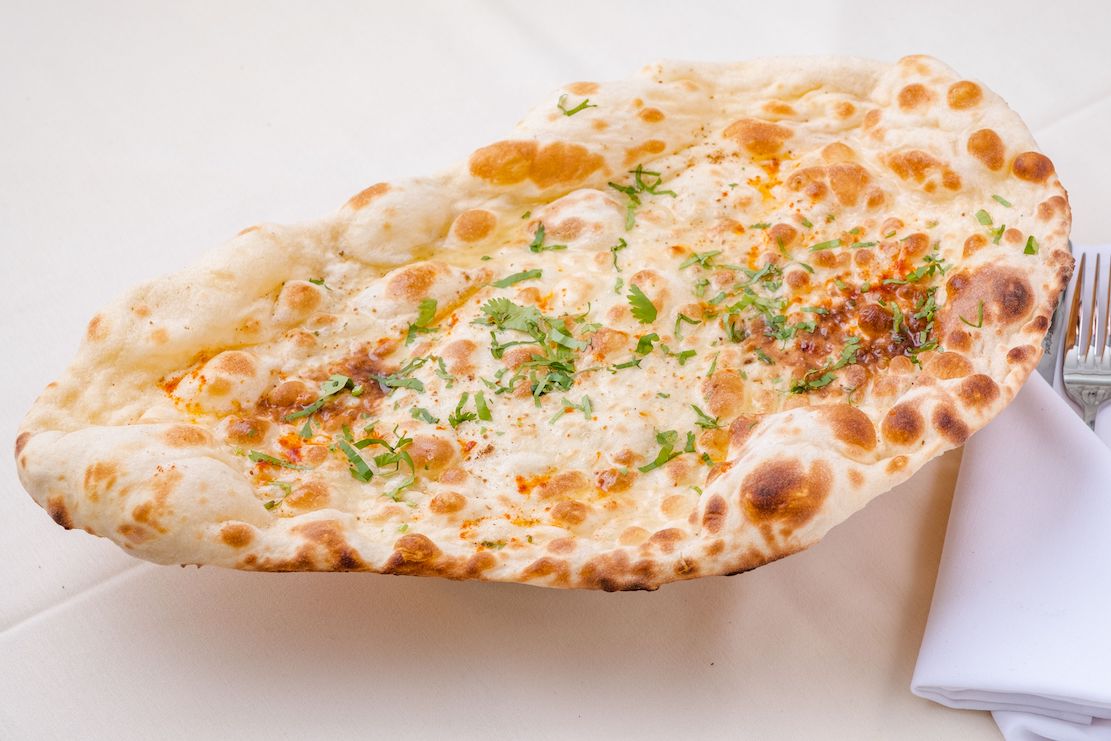
While
Queens is still New York’s predominant Indian
neighborhood, Manhattan from the East Village up
to Yorkville is dotted with Indian restaurants,
increasingly with a regional appeal rather than
what had long been an entrenched Mughal style of
cuisine. Chola, which has been on East 58th
Street for twenty years and was recently
refurbished, is one of the best and most
representative of the vast sub-continent’s
culinary diversity.
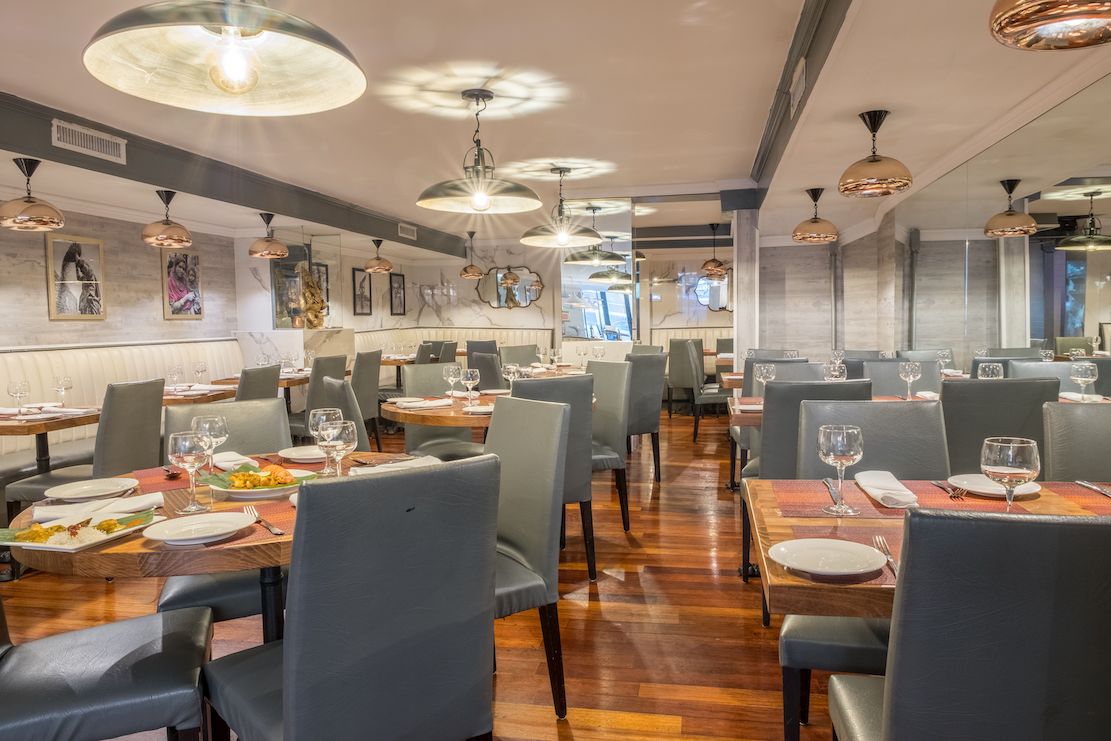 Named
after a Tamil Dynasty that dates back more than
2,000 years, Chola is a smart-looking,
contemporary long room with an upfront bar that
owners Shiva Natarajan and
Min Buhjel have redecorated with Indian
photos, hardwood floors, very comfortable gray
leather chairs, and soft overhanging lights with
brass accents. The sound level is quite amiable
for conversation.
Named
after a Tamil Dynasty that dates back more than
2,000 years, Chola is a smart-looking,
contemporary long room with an upfront bar that
owners Shiva Natarajan and
Min Buhjel have redecorated with Indian
photos, hardwood floors, very comfortable gray
leather chairs, and soft overhanging lights with
brass accents. The sound level is quite amiable
for conversation.
One of the many pleasures of
Indian restaurants is the aroma of cooking spices
that float through the dining room, making you
even more hungry than you were a moment ago.
Cumin, coriander, turmeric, garam masala, cinnamon
all commingle and the smell of freshly baked
breads make it all the more alluring.
The familiar dishes are
available at Chola—saag paneer,
murgh vindaloo, chicken tikka masala
and much more, all now updated—but it the panoply
of unique dishes that distinguish the menu, which
now emphasizes seafood. I asked Min Buhjel to send
out an array of the new signature dishes, which
began with lasoni
gobi ($10), a generous dish of spicy cauliflower in an assertive
ginger-garlic paste. The joy of Indian cuisine is
in the variety and balance of seasonings, not mere
fiery heat. So the tunde ka kebab ($15) were tender
lamb patties principally spiced with fresh mint,
while dhabewali
murgh tikka ($13) came as morsels of chicken
that had been marinated and tenderized in sour
cream and lime juice then quickly grilled. 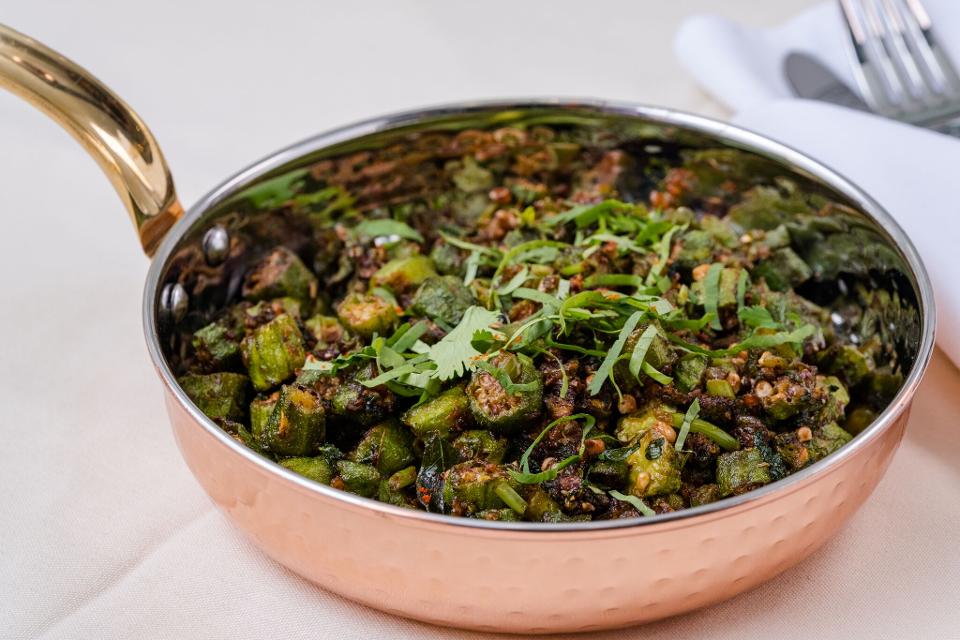
Lata Shetty’s
Kori Gassi ($22)was a chicken stew of high
heat curry from the Bunt community in Mangalore on
the Indian coastline. Another chicken dish was a
creamy masala
(blend) of not-so-hot, slightly sweet spices
($23). It was rich and very savory, a slightly
sweeter stew of coconut curry.
Indian cuisine is rife with long-simmered
lentil dishes called dals,
and Chola’s dal
malai marke ($12) is laced with cream and
tomato. Adrak ki
gobi )$17) was a keema dish
of minced cauliflower, powerful green chili and
freshly grated ginger, while a classic lamb biryani
was a hearty rice dish layered with lamb, as in
Japanese dim sum. Pungent mustard and spices
coated tandoor-cooked burrah
kebabs of lamb chops kasundi.
Other specialties include
cafreal paneer tikka ($11) of grilled cheese and
green masala; Khekda
nariyal ($18), a sautéed crab dish with
coconut and mustard seeds; and several vegetable
dishes like doodhi
chana ($13), white pumpkin with yellow chana dal.
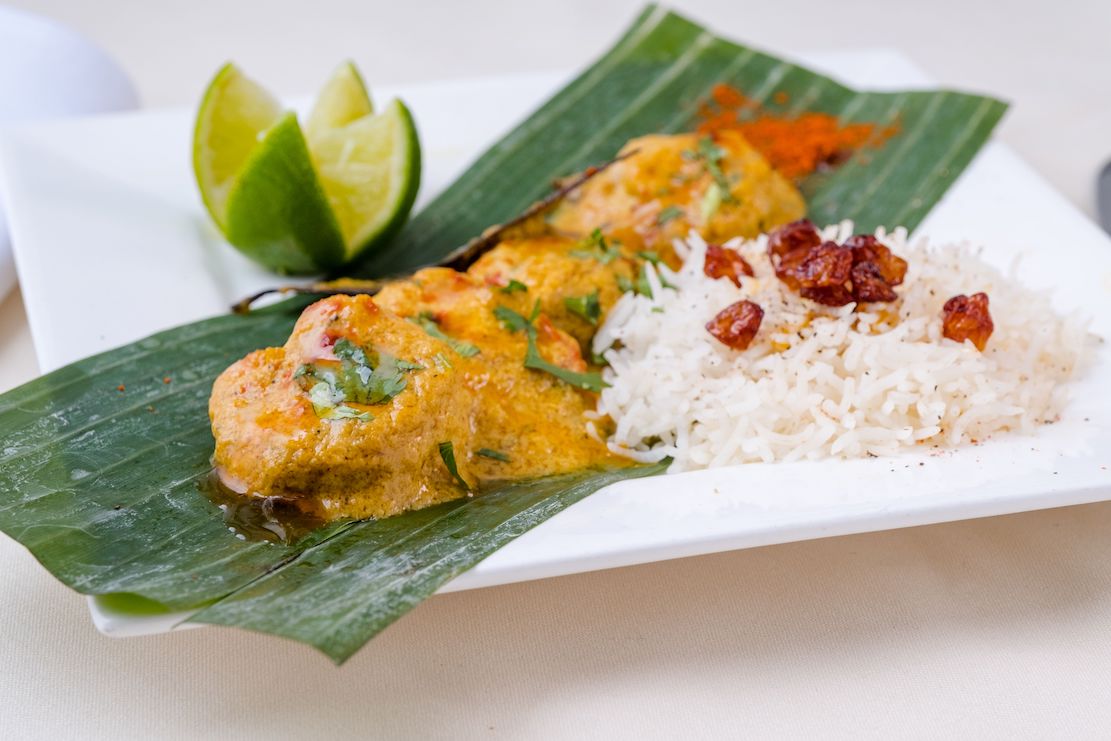 There were, of course,
Indian breads slapped against the wall of the
tandoor, emerging moments later, steamy, puffy and
charred, with the aroma of yeast in the air. All
the chutneys are made in-house.
There were, of course,
Indian breads slapped against the wall of the
tandoor, emerging moments later, steamy, puffy and
charred, with the aroma of yeast in the air. All
the chutneys are made in-house.
I’m one who enjoys Indian
desserts, most based on cheese and cream, with
pistachios made into ice cream-like sweets, and
Chola’s are as good as those served by competitors
on the upper East Side.
Chola
hasn’t stayed around for twenty years without
adapting to changing tastes, and those that
currently fill a menu that is smaller but more
cogent than others’ give a better focus on the
kitchen’s strengths. Its new décor also makes it
one of the most attractive Indian restaurants in
the city.
Open
daily for lunch and dinner.
❖❖❖
By John Mariani
VERY LOW PRICES
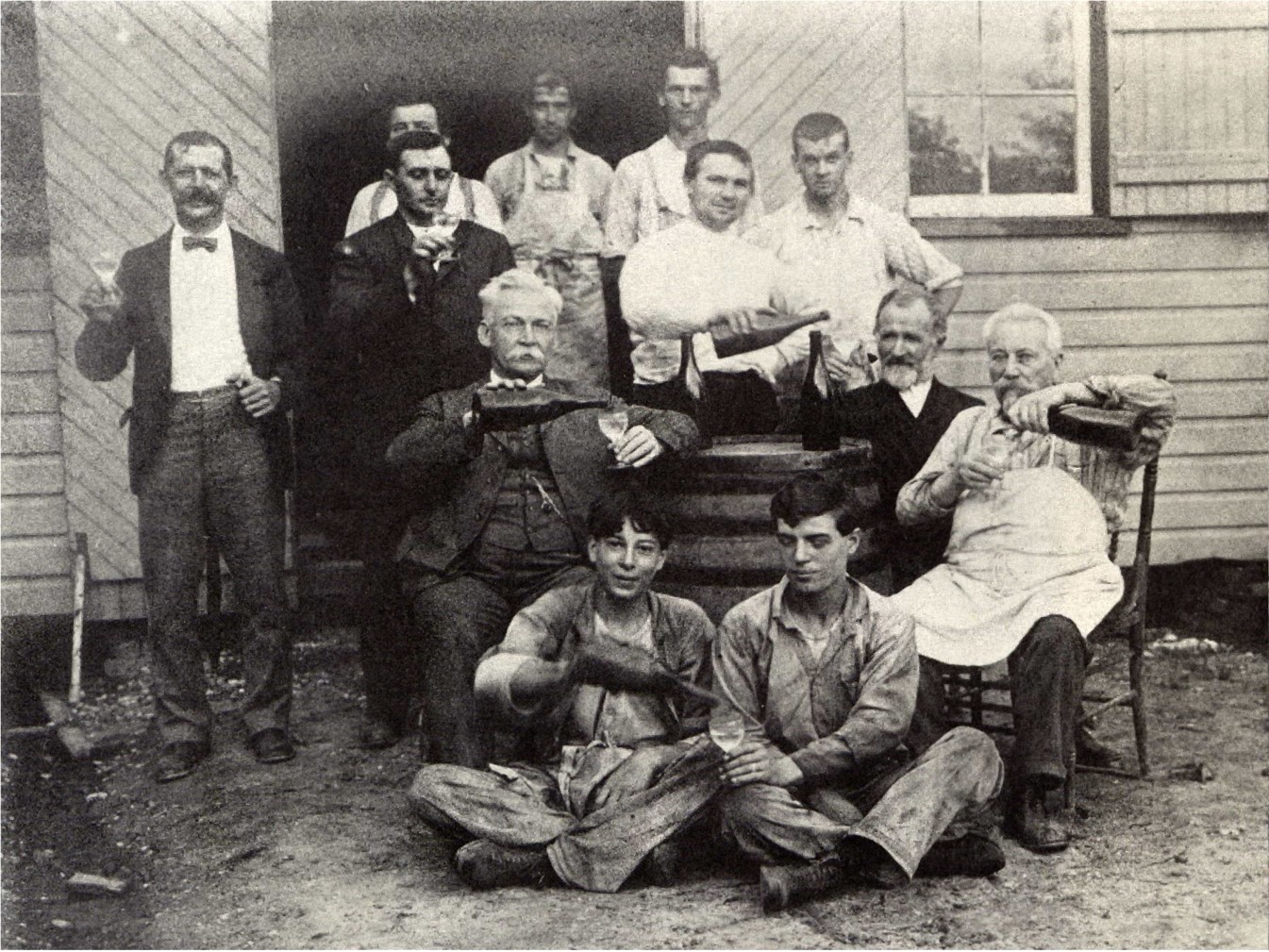
Not
everyone can uncork $100 Bordeaux, $70
California Chardonnays or $50 Priorats
most days of the week, but while there
are few bottlings that a true wine lover
can drink with pleasure under $15 a
bottle, there is increasingly a
wonderful array of wines that are easy
to love and easy to buy in the $15-$20
range. They tend to be very versatile
wines too—not monster Cabs or overly
aromatic Fumé Blancs—so that they go
well with a wide range of dishes. Here
are some recent finds I’ll happily drink
at any time.
 La
Bernarde 2018 ($15)—A
delicious, organic Côtes
du Provence winter rosé for any festive
table. Blended with 46% Cinsault, 27%
Grenache, 7% Syrah, 11% Mourvèdre and 9%
Rolle, it has a good deal of complexity
and flowery aromas from the gravelly soil
of this sunny region. The modest but not
light 12.5% alcohol is just right, not
least as an apéritif.
La
Bernarde 2018 ($15)—A
delicious, organic Côtes
du Provence winter rosé for any festive
table. Blended with 46% Cinsault, 27%
Grenache, 7% Syrah, 11% Mourvèdre and 9%
Rolle, it has a good deal of complexity
and flowery aromas from the gravelly soil
of this sunny region. The modest but not
light 12.5% alcohol is just right, not
least as an apéritif.
Clarendelle 2014 ($19.99)—This is a
splendid example of the kind of
Saint-Émilion wines now coming to market,
with a characteristic blend of 77% silky
Merlot, 16% Cabernet Franc and 7% Cabernet
Sauvignon for body and tannins, which have
mellowed out over five years. Excellent as
a Bordeaux 101 wine that will be very
rewarding with pork or veal.
Beronia Crianza 2016 ($15)—Crianza is a
Spanish wine that has been kept a minimum
of a year in an oak barrel, in this case
one made of American staves with a French
top.
The Rioja blend is 91% Tempranillo,
so it’s muscular, with 8% Garnacha and 1%
Mazuelo to tame it down. The 13.5% alcohol
level makes it ideal for a wide range of
red meats  or
chicken, as well as tomato-based sauces.
or
chicken, as well as tomato-based sauces.
Lohsa Morellino di Scansano
2017 ($16)—The wines of
Morellino di Scansano come from Tuscany’s
Maremma region, where the Sangiovese grape
is called Prugnolo Gentile. The Azienda
Agricola Poliziano, led by winemaker
Federico Carletti, is an exacting
proponent of Morellino, and their wines,
even at this low price, show many of the
characteristics of much better-known, more
expensive Tuscans. There is 15% Ciliegiolo
added to 85% Sangiovese—and in some years
Malvasia Nera and Canaiolo—which makes it
akin to traditional Chiantis. By spending
ten months in barrel and two to four
months in bottle, it’s of moderate weight
and well-suited to veal chops, risottos
with mushrooms or Italian hams.
Dry Creek Dry Chenin Blanc
Clarksburg 2018 ($16)—Chenin Blanc is a
versatile but tricky grape that usually
has some sweetness to it. It’s a major
varietal in South Africa and France, where
it is used to make Vouvray and
Savennières. The drier it gets the better
the winemaker has to be to make it work,
but the acidity (6.4 gram per liter) makes
it a good white wine for poultry or a fine
option to Sherry as an aperitif. Dry
Creek’s owner, David S. Stare, has been
producing good Chenin Blanc for 50 years
and is, I think, foremost in California
for ennobling an often-dismissed varietal.
At $16 a bottle, how could one?
Crios Malbec 2018 ($12)—Another winner from Mendoza’s Susanna Balbo at an amazing price for an exceptional Malbec from the Val de Uco’s highest elevation, so the alcohol is a sensible 14%, the acids providing brightness and nine months in French oak adds to the complexity and warmth. For roast turkey on the holidays this would be easy enough to serve to an army of guests with varying tastes.
La Segreta Rosso 2017 ($15)—It would be praise enough to say this is a great pizza wine, but with a savvy blending of 50% Nero d'Avola, 25% Merlot, 20% Syrah and 5% Cabernet Franc this Sicilian DOC would be just as terrific with any number of foods, not least rigatoni alla Norma or lasagne alla bolognese. It’s got a pleasing acidity and a taste of Mediterranean herbs. The name refers to woods that surround the Ulmo vineyard in the Menfi district of western Sicily.
❖❖❖

A FOOD LIST MADE
BY A
MILLENNIAL
According to the DailyMeal,
Here are
just a few vintage kitchen staples you don’t see
much of anymore:.
-butter
-peas
-heavy
cream
-leftovers
-buttermilk
-milk

"Proceeding
through each of the five courses of chef Stefano
Secchi’s pasta tasting menu at Rezdôra—a restaurant
conceived as a tribute to the many excellent eats from
the Emilia-Romagna region of Italy—gripped me with such
noodle euphoria that I morphed into Meg Ryan during that
climax in When Harry Met
Sally.... I
apologize to anyone who was sitting near me—although
eventually the same thing happened to them." Jeff Gordinier,
“Esquire’s Best New Restaurants in America,” (Dec.
2019).
Any of John Mariani's books below may be ordered from amazon.com.
 The Hound in Heaven
(21st Century Lion Books) is a novella, and
for anyone who loves dogs, Christmas, romance,
inspiration, even the supernatural, I hope you'll find
this to be a treasured favorite. The story
concerns how, after a New England teacher, his wife and
their two daughters adopt a stray puppy found in their
barn in northern Maine, their lives seem full of promise.
But when tragedy strikes, their wonderful dog Lazarus and
the spirit of Christmas are the only things that may bring
his master back from the edge of despair.
The Hound in Heaven
(21st Century Lion Books) is a novella, and
for anyone who loves dogs, Christmas, romance,
inspiration, even the supernatural, I hope you'll find
this to be a treasured favorite. The story
concerns how, after a New England teacher, his wife and
their two daughters adopt a stray puppy found in their
barn in northern Maine, their lives seem full of promise.
But when tragedy strikes, their wonderful dog Lazarus and
the spirit of Christmas are the only things that may bring
his master back from the edge of despair. WATCH THE VIDEO!
“What a huge surprise turn this story took! I was completely stunned! I truly enjoyed this book and its message.” – Actress Ali MacGraw
“He had me at Page One. The amount of heart, human insight, soul searching, and deft literary strength that John Mariani pours into this airtight novella is vertigo-inducing. Perhaps ‘wow’ would be the best comment.” – James Dalessandro, author of Bohemian Heart and 1906.
“John Mariani’s Hound in Heaven starts with a well-painted portrayal of an American family, along with the requisite dog. A surprise event flips the action of the novel and captures us for a voyage leading to a hopeful and heart-warming message. A page turning, one sitting read, it’s the perfect antidote for the winter and promotion of holiday celebration.” – Ann Pearlman, author of The Christmas Cookie Club and A Gift for my Sister.
“John Mariani’s concise, achingly beautiful novella pulls a literary rabbit out of a hat – a mash-up of the cosmic and the intimate, the tragic and the heart-warming – a Christmas tale for all ages, and all faiths. Read it to your children, read it to yourself… but read it. Early and often. Highly recommended.” – Jay Bonansinga, New York Times bestselling author of Pinkerton’s War, The Sinking of The Eastland, and The Walking Dead: The Road To Woodbury.
“Amazing things happen when you open your heart to an animal. The Hound in Heaven delivers a powerful story of healing that is forged in the spiritual relationship between a man and his best friend. The book brings a message of hope that can enrich our images of family, love, and loss.” – Dr. Barbara Royal, author of The Royal Treatment.
 |
The Encyclopedia of American Food and Drink by John F. Mariani (Bloomsbury USA, $35) Modesty forbids me to praise my own new book, but let me proudly say that it is an extensive revision of the 4th edition that appeared more than a decade ago, before locavores, molecular cuisine, modernist cuisine, the Food Network and so much more, now included. Word origins have been completely updated, as have per capita consumption and production stats. Most important, for the first time since publication in the 1980s, the book includes more than 100 biographies of Americans who have changed the way we cook, eat and drink -- from Fannie Farmer and Julia Child to Robert Mondavi and Thomas Keller. "This book is amazing! It has entries for everything from `abalone' to `zwieback,' plus more than 500 recipes for classic American dishes and drinks."--Devra First, The Boston Globe. "Much needed in any kitchen library."--Bon Appetit. |
"Eating Italian will never be the same after reading John Mariani's entertaining and savory gastronomical history of the cuisine of Italy and how it won over appetites worldwide. . . . This book is such a tasteful narrative that it will literally make you hungry for Italian food and arouse your appetite for gastronomical history."--Don Oldenburg, USA Today. "Italian
restaurants--some good, some glitzy--far
outnumber their French rivals. Many of
these establishments are zestfully described
in How Italian Food Conquered the World, an
entertaining and fact-filled chronicle by
food-and-wine correspondent John F.
Mariani."--Aram Bakshian Jr., Wall Street
Journal.
"Equal parts
history, sociology, gastronomy, and just
plain fun, How Italian Food Conquered the
World tells the captivating and delicious
story of the (let's face it) everybody's
favorite cuisine with clarity, verve and
more than one surprise."--Colman Andrews,
editorial director of The Daily
Meal.com. "A fantastic and fascinating
read, covering everything from the influence
of Venice's spice trade to the impact of
Italian immigrants in America and the
evolution of alta cucina. This book will
serve as a terrific resource to anyone
interested in the real story of Italian
food."--Mary Ann Esposito, host of PBS-TV's
Ciao
Italia. "John Mariani has written the
definitive history of how Italians won their
way into our hearts, minds, and
stomachs. It's a story of pleasure over
pomp and taste over technique."--Danny Meyer,
owner of NYC restaurants Union Square
Cafe, The Modern, and Maialino.
|
 |
 |
 |
 |
 |
 |
 |
 |
 Everett Potter's Travel Report:
Everett Potter's Travel Report: 
 Eating Las Vegas
JOHN CURTAS has been covering the Las Vegas
food and restaurant scene since 1995. He is
the co-author of EATING LAS VEGAS – The 50
Essential Restaurants (as well as
the author of the Eating Las Vegas web site: www.eatinglasvegas.
He can also be seen every Friday morning as
the “resident foodie” for Wake Up With the
Wagners on KSNV TV (NBC) Channel 3 in
Las Vegas.
Eating Las Vegas
JOHN CURTAS has been covering the Las Vegas
food and restaurant scene since 1995. He is
the co-author of EATING LAS VEGAS – The 50
Essential Restaurants (as well as
the author of the Eating Las Vegas web site: www.eatinglasvegas.
He can also be seen every Friday morning as
the “resident foodie” for Wake Up With the
Wagners on KSNV TV (NBC) Channel 3 in
Las Vegas.
MARIANI'S VIRTUAL GOURMET
NEWSLETTER is published weekly. Publisher: John Mariani. Editor: Walter Bagley. Contributing Writers: Christopher Mariani,
Robert Mariani, Misha Mariani, John A. Curtas, Gerry Dawes, Geoff Kalish,
and Brian Freedman. Contributing
Photographer: Galina Dargery. Technical
Advisor: Gerry
McLoughlin.
If you wish to subscribe to this
newsletter, please click here: http://www.johnmariani.com/subscribe/index.html
© copyright John Mariani 2019

